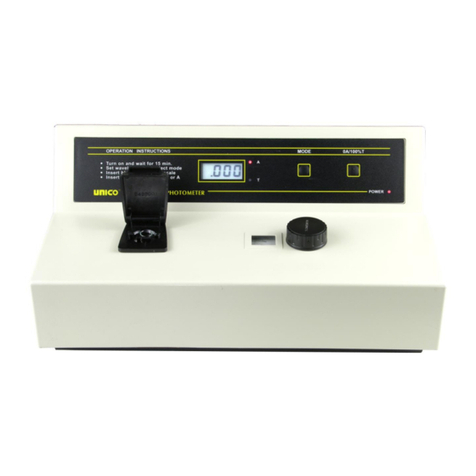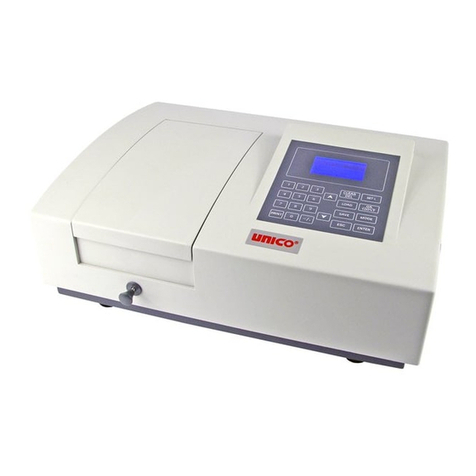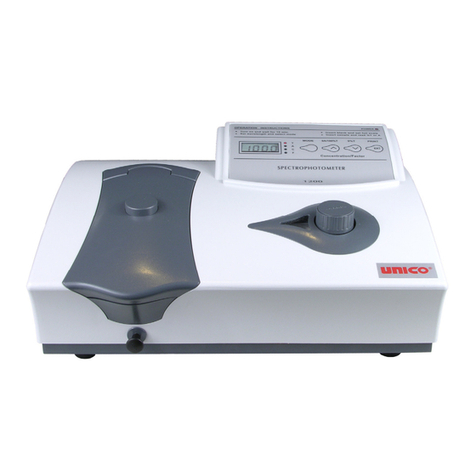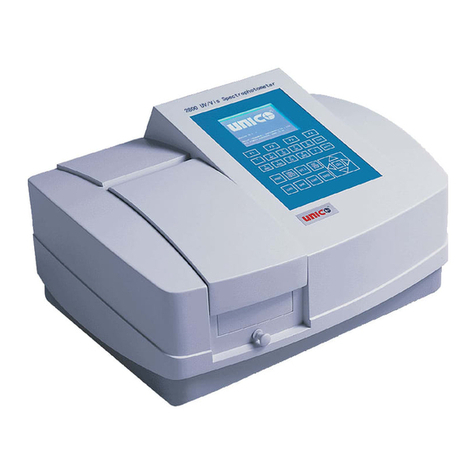
Safety:
The safety statements in this manual comply with the requirements of the
HEALTH AND SAFETY AT WORK ACT, 1974.
Read the following before installing and using the instrument and its
accessories. The UNICOUV-2802 should be operated by appropriate
laboratory technicians.
General:
The apparatus described in this manual is designed to be used by properly
trained personnel in a suitable equipped laboratory. For the correct and safe
use of this apparatus it is essential that laboratory personnel follow generally
accepted safe procedures in addition to the safety precautions called for in this
manual.
The covers on this instrument may be removed for servicing. However, the
inside of the power supply unit is a hazardous area and its cover should not be
removed under any circumstances. There are no serviceable components
inside this power supply unit. For UNICOUV-2802, avoid touching the high
voltage power supply at all times.
Some of the chemicals used in spectrophotometry are corrosive and/or
inflammable and samples may be radioactive, toxic, or potentially infective.
Care should be taken to follow the normal laboratory procedures for handling
chemicals and samples.
Electrical:
Before switching on the apparatus, make sure it is set to the voltage of the
local power supply (see Installation).
The power cord shall be inserted in a socket provided with a protective earth
contact. The protective action must not be negated by the use of an
extension cord without a protective conductor.
Warning:
Any interruption of the protective conductor inside or outside the apparatus or
disconnection of the protective earth terminal is likely to make the apparatus
dangerous. Intentional interruption is prohibited.
Whenever it is likely that the protection has been impaired, the apparatus shall
be made inoperative and be secured against any unintended operation.
NEVER touch or handle the power supply on UNICOUV-2802 due to the high
voltage.
The protection is likely to be impaired if, for example, the apparatus
ŸShows visible damage
ŸFails to perform the intended measurements
ŸHas been subjected to prolonged storage under unfavorable conditions
ŸHas been subjected to severe transport stresses
































